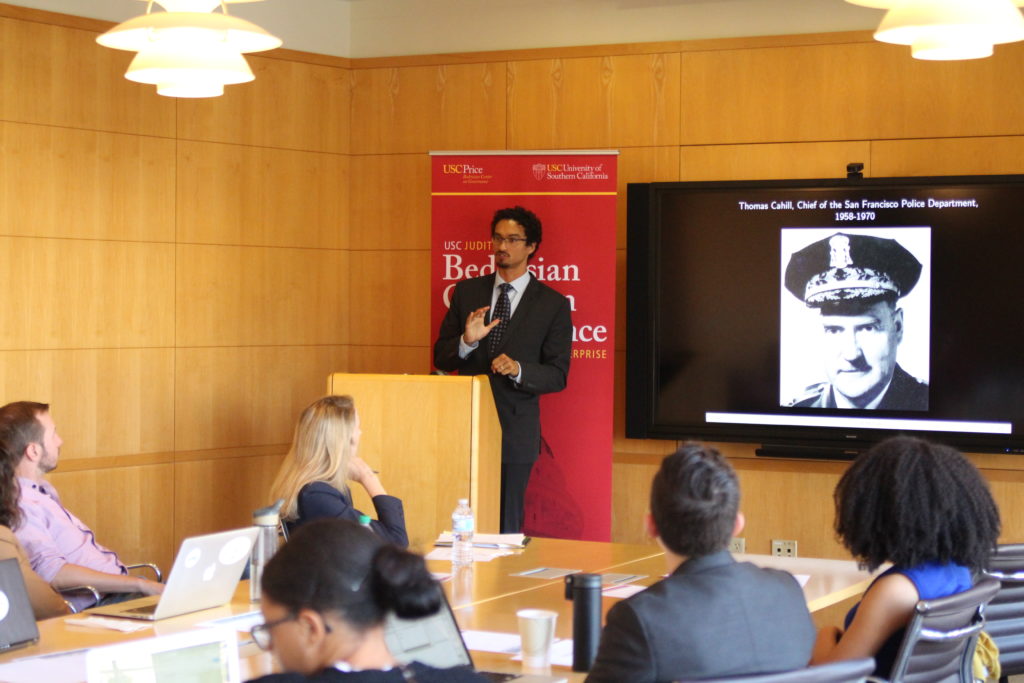Race and Law Enforcement: Research to Inform Reform Movements
Published by USC Bedrosian Center on
The nation has witnessed two weeks of civil unrest; and policing as a political institution has been under public scrutiny for decades. With protests in all 50 states during this latest public outcry, a call for reform resounds. As we work toward a resolution many are asking – what do we know about race and law enforcement?
In October of 2018, the Bedrosian Center, through our Political Institutions and Political Economy (PIPE) Collaborative, hosted a symposium on Race and Law Enforcement. Scholars from a range of top research universities (including Emory, Johns Hopkins, Stanford, UC-Berkeley, UC-Davis, and Yale) presented cutting-edge work on police-community relations, the implications of police violence for democracy and the gaps in political representation often faced by people of color.
The research, as a collection (published in the July 2019 issue of the Journal of Politics), can inform policymakers on areas and strategies for institutional reform.

Evidence points to serious problems in data collection and analysis. For example, over-policing a neighborhood leads to the misinterpretation that it has higher crime rates – and higher rates of lethal force – than neighborhoods without much police presence. This assumption can lead to inferential mistakes, like concluding that racial disparities in the rates of lethal force are due to racial differences in the interaction or officer bias, rather than the lack of factoring in location of data collection.
Research also shows that neighbors in over-policed areas have much more knowledge of the justice system than policymakers give credit. By distancing the institution from citizen knowledge, police are dismissing an enormous source of source of information that can help move the institution and it’s community toward reform and public trust. Unfortunately, incentives exist for police chiefs to seek out new policing strategies that rely less on community assistance, further eroding public trust.
Scholars also find that public information influences levels of blame for and trust in the police. Those effects depend on citizens’ race and their proximity to violence. Trust in policing is further complicated as police violence can diminish the standing of police personnel within a community, as favorable local opinion in the institution preserves its political influence.

Finally, while public perception may change after officer-involved shootings, citizen-initiated contact with metropolitan government remains the same. Citizens – both black and white – continue to seek out governmental help after an officer-involved shooting at prevailing rates.
Overall, the research from the Symposium suggests that police departments need to improve data-collection efforts as well as research and analysis designs to eliminate inferential mistakes, more accurately account for citizen knowledge and improve trust between residents and police.(Additional photos taken during the symposium can be found here.)



